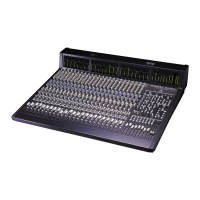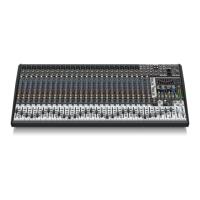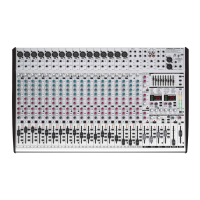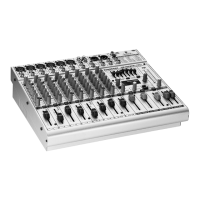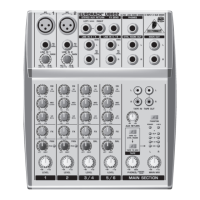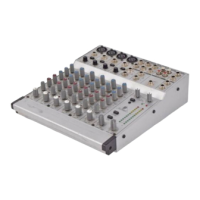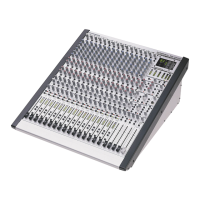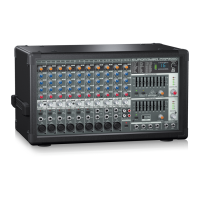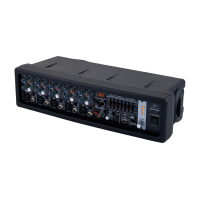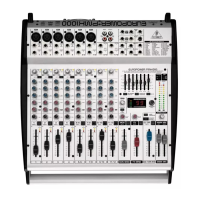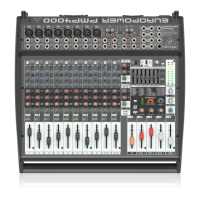Do you have a question about the Behringer EuroDesk MX9000 and is the answer not in the manual?
Defines key terms and vocabulary used in mixing and the manual.
Explains the manual's compartmentalized structure for clarity.
Explains the meaning of prefixes used in diagrams and text.
Describes the console's hybrid SPLIT/INLINE design and configuration.
Explains the function and display of channel, subgroup, and main mix meters.
Details the external power supply specifications and importance.
Introduces the main and secondary (B-channel) input/output paths.
Explains how to select MIC, LINE, or TAPE inputs and use the PAD.
Guides on setting channel input levels using the gain control and PFL.
Details the 4-band EQ controls and high-pass filter on the channel strip.
Explains the six mono aux sends and their pre/post fader routing options.
Covers how to route signals to buses and use mute functions.
Describes the secondary channel's EQ, pan, level, and source options.
Details the eight subgroup outputs used for track laying and submixing.
Explains the direct output feature for individual channel feeds.
Covers the master controls for the six aux send buses.
Details the MIX-B bus master controls and routing options.
Explains the monitor section controls for listening to different sources.
Describes the master controls for headphone outputs 1 and 2.
Explains the Pre-Fader Listen and Solo functions for signal auditioning.
Details the talkback system for communicating with performers.
Details the various input/output connectors on the rear of the console.
Provides instructions and diagrams for soldering common audio plugs.
Explains the concept of normalized jacks and their function.
Guides on setting up a studio patchfield for flexible routing.
Discusses common cabling issues like earth loops and cable management.
Step-by-step guide for setting up a single channel's inputs and levels.
Covers initial desk normalization and tape machine synchronization.
Details routing of signals from groups and auxes for recording and effects.
Shows how to create headphone mixes without using aux sends.
Discusses bringing tape returns and synth/sampler outputs back into the console.
Guides on matching operating levels for recorders and samplers.
Covers the process of mixing down recorded tracks.
Outlines recording procedures for a 16-track setup with samplers.
Discusses setting up headphone mixes for multiple performers.
Explains mixdown assignments for a 16-track setup with samplers.
Provides an example setup for recording a live band with 24 tracks.
Offers advanced headphone mix configurations for multiple musicians.
Explains how to monitor tracks with effects during live recording.
Covers mixdown considerations for a 24-track studio setup.
Explains how to connect multiple EURODESK consoles together.
Guides on aligning signal levels when linking consoles.
Details a modification to change aux send routing from pre-fader to post-EQ.
Explains a modification to route the MIX-B source post-fader.
Describes a modification to change meter bridge behavior to pre-fader.
Instructions for registering the product for extended warranty.
Outlines the terms and period of the product warranty.
Procedure for obtaining a return authorization for service.
Details the conditions and exclusions of the warranty coverage.
States that the warranty is non-transferable to subsequent owners.
Defines the limits of BEHRINGER's liability for damages.
Clarifies how national laws interact with the provided warranty.
| Brand | Behringer |
|---|---|
| Model | EuroDesk MX9000 |
| Category | Music Mixer |
| Language | English |
